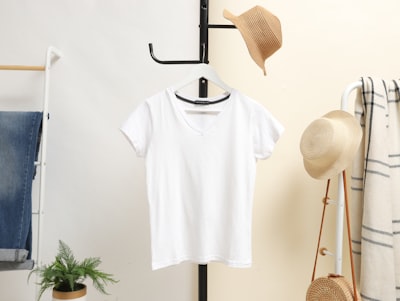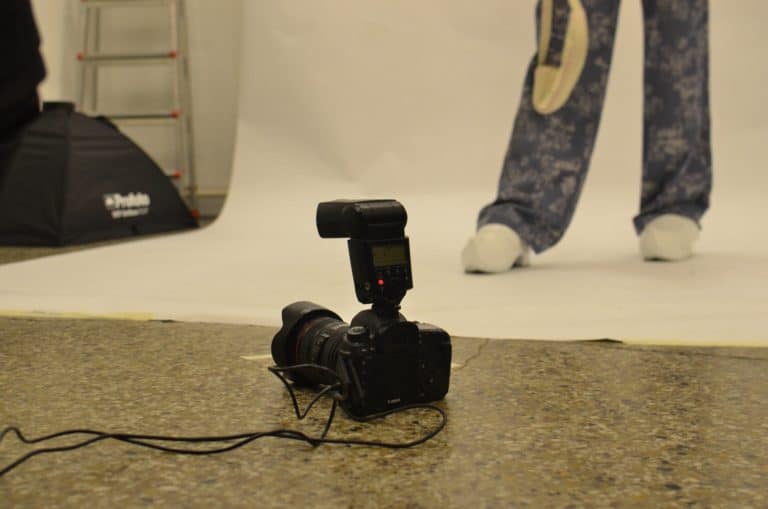Print on Demand vs. Drop Shipping: Best for Your Business?
Print on Demand vs. Drop Shipping
Print on Demand vs. Drop Shipping? Both are popular e-commerce models that offer a low-risk way to test out business ideas. In this blog, we will delve into the differences between POD and Dropshipping, their similarities, the pros and cons of each model, and why Shopify is a great platform to launch your store.
We will also cover topics such as pricing strategies, customer service management, Google Analytics tracking, fulfillment processes, custom packaging options, and optimizing your store’s checkout process.
Whether you’re just starting or looking to optimize your existing store, this blog will help you decide which business model is best suited for your needs.

How Does Dropshipping Work?
Dropshipping is a business model where you team up with a supplier who sends products directly to your customers. After receiving an order on your website, you pass the details to the supplier, who packages and ships with your branding. You don’t need inventory or storage space, making it ideal for those without capital.
What is Print on Demand POD?
Print on Demand is a business model that prints and ships products only when they are ordered, eliminating the need for inventory. It’s flexible and can be used for various products like t-shirts, books, and art prints, with providers like Shopify, Printify, and Printful making it accessible for everyone.
Similarities Between Print on Demand and Dropshipping
Businesses looking to expand their online store’s product range can choose between the print-on-demand and dropshipping business models. Both models share several similarities that make them an attractive option for entrepreneurs with low capital and storage space.
Firstly, they offer a diverse product range without carrying inventory. Secondly, they are flexible and scalable based on demand. Finally, they require little upfront investment.
Difference in Products for Print on Demand vs Dropshipping
Print-on-demand and dropshipping differ mainly in their product offerings. Print-on-demand services specialize in customizable items such as t-shirts, mugs, and phone cases that are printed only when ordered. On the other hand, dropshippers focus on pre-made products that are shipped directly from third-party suppliers.
While print-on-demand offers more design and product customization options, dropshipping often has lower upfront costs and longer shipping times.
Pros and Cons of Print on Demand Printing
While it’s true that Print on Demand (POD) offers a low-risk business model that allows for custom designs and small-batch orders, there are some downsides to consider.
While there are no inventory requirements or upfront costs with POD, the outsourcing of the printing process can make quality control more challenging. Additionally, while POD allows for more design flexibility than dropshipping options like mugs or phone cases through platforms like Printful demand companies.
It’s important to note that profit margins may be lower due to higher production costs per unit compared to bulk ordering through dropshipping wholesalers. Despite these drawbacks, print-on-demand business owners can take their online stores to the next level by diversifying their product range and optimizing their ecommerce SEO.
Pros and Cons of Dropshipping
There are various pros and cons to consider when deciding between using dropshipping or print on demand for your online store. While dropshipping has the advantage of low upfront costs and easy entry into the market, it also means dealing with lower profit margins due to supplier fees, less control over shipping and product quality, and potential delays in order fulfillment.
Print on demand, on the other hand, offers businesses greater flexibility in terms of customizing products and product range options such as mugs or phone cases; however, it may be costly per unit as compared to bulk ordering with drop shipping.
Benefits of Using Shopify for Print on Demand Dropshipping
Shopify is an ideal platform to sell print-on-demand (POD) products due to its various advantages over other platforms. With its intuitive interface and numerous POD dropshipping integrations, it makes creating custom products a breeze. Besides being affordable, it also offers excellent customer support via live chat and email support round the clock.
Using Shopify will automate order processing and shipping, especially if you are running a POD business with multiple product lines or niche products such as mugs or phone cases. With high-profit margins and low startup costs, Shopify is the best way to take your POD business to the next level.
Step-by-Step Guide to Start with Shopify Print on Demand
Want to start your own Print on Demand business but don’t know where to begin? Look no further than Shopify’s print-on-demand service! With various secondary keyterms like shipping time, product quality, profit margin, and designing T-shirts available through the platform’s print-on-demand integrations from providers like Printful or Customcat, it’s never been easier to create and sell unique products online.
Follow these simple steps:
Choose a reputable provider that integrates with Shopify, create your original designs using Photoshop or other software tools while also keeping in mind other niche keywords like mugs or phone cases for higher profitability margins.
Upload them onto the POD platform and then set up your Shopify store with all the necessary details about payment gateways or free shipping options.
Market your products via social media channels such as Instagram and Facebook or email campaigns so that people can see what you have on offer before enjoying the hassle-free fulfillment process offered by the demand companies.
Keep tabs on your sales data through Google Analytics so you can adjust as per demand changes.
Benefits of Using Printful for Print on Demand
Looking to take your print-on-demand business to the next level? Look no further than Printful. With their wide range of customizable products, integrations with major ecommerce platforms like Shopify and WooCommerce, and excellent customer service, Printful is the best way to grow your online store.
Their low-risk business model allows you to focus on creating new products and building your own brand without worrying about inventory. Plus, with high profit margins and free shipping on many items, Printful is the perfect choice for entrepreneurs looking to maximize profitability.
How to Create Designs and Products with Printful
To take your print-on-demand business to the next level with low risk and higher profit margins, Create custom pod products with Printful’s various products ranging from tees to mugs. Choose from over 230+ customizable products and use photoshop or other design tools to create own designs that reflect your own brand logo. You can integrate this demand service into an online store on ecommerce platforms like Shopify or WooCommerce for free shipping.
Fulfillment Process for Print on Demand
Print on Demand (POD) is a popular and cost-effective business model that offers various benefits to demand companies. POD businesses can print and ship products as orders come in without needing any inventory or storage. This lowers the shipping time while providing higher-profit margins.
The customization options available with POD make it easier for businesses to offer a greater variety of products without worrying about storage costs. Business owners should consider factors like product quality, profit margin, and shipping time when choosing between the POD business model and dropshipping.
Diversifying Your Niche with Print on Demand
If you want to diversify your online store’s niche while lowering risk, Print On Demand (POD) may be the best way to go. Unlike dropshipping where you depend on third-party suppliers for shipping and delivery, POD companies offer a fulfillment service that prints and ships products as orders come in.
This model allows more diversity in product range without inventory costs while giving you the freedom to add new products or designs anytime you like. Before choosing between print-on-demand and dropshipping models, analyzing factors such as shipping time and higher profit margins through personalized mugs or phone cases are essential. Keep this in mind when deciding which option would be best suited to your business model.
Integrating Instagram and Facebook for Print on Demand
Boosting your Print On Demand (POD) business is as easy as integrating Instagram and Facebook into your marketing strategy. These platforms offer seamless integration with POD providers, allowing you to create visually appealing content that drives traffic and sales to your online store without relying on expensive advertising campaigns.
With effective hashtagging and account tagging, you can expand the reach of your brand while also boosting engagement with potential customers on these popular social networks. For even better results, don’t forget to link your social profiles directly to your POD website or ecommerce store.
How to Optimize Your Ecommerce Store for Print on Demand
To take your print-on-demand business’s ecommerce store to the next level and generate higher profit margins, choose a reputable print-on-demand service provider with a vast range of customizable products. Enhance each product’s description by highlighting its unique features and pair it with free shipping or limited edition items to attract new customers.
Collaborate with various social media platforms like Instagram and Facebook to boost visibility and reach more potential buyers. Track sales data through Google Analytics and optimize your store’s checkout process for a smooth shopping experience. Use custom packaging designs with your own logo to elevate your brand image and provide excellent customer service for better customer retention.
Using Amazon for Print on Demand Sales
Amazon’s Print on Demand service offers a low-risk way for business owners to enter the print-on-demand business. With no upfront costs or inventory management required, it’s an attractive option for those just starting out. Not only that, but Amazon provides fast and reliable shipping to customers, ensuring that they receive their products in a timely manner. While dropshipping is still a viable business model for many entrepreneurs, using Amazon as a POD supplier can take your online store to the next level.
Designing T-Shirts for Print on Demand
To create stand-out T-shirts for your print-on-demand business, start by using high-quality graphics and designs that are visually appealing to customers. Consider placing the design in spots where it will have maximum impact, which will help draw potential buyers’ attention. When selecting colors, be sure they complement the design and appeal to your target audience. Finally, optimize product descriptions and titles with SEO keywords so they appear higher up in search results.
Packaging and Shipping for Print on Demand
To make sure your Print On Demand business runs smoothly, consider adding custom packaging such as branded boxes or inserts for a personalized touch. Along with eco-friendly packaging options to appeal to environmentally conscious customers. Don’t forget to include shipping costs while pricing products since shipping times could vary depending on the location of your customer and the Print On Demand supplier. By keeping these things in mind, you can ensure higher profit margins and happy customers.
Using Aliexpress for Dropshipping
Aliexpress is one of the most popular platforms for dropshipping due to its range of products and low prices. However, businesses need to be aware of some cons such as longer shipping times and potential quality control issues. While Aliexpress may be suitable for some businesses, print-on-demand may be better for those looking to offer custom designs and high-quality products. Printful is an excellent option for demand service with custom branding options ranging from mugs to phone cases.
Pros and Cons of Aliexpress for Dropshipping
As a dropshipper, there are various options available to you when it comes to selecting a suitable platform for your ecommerce store. Aliexpress is one such option that offers multiple benefits such as access to a vast product range at relatively lower costs compared to other wholesalers or third-party dropshipping companies. However, on the downside, shipping times may be longer than usual and quality control can be an issue with some products. Hence, it is essential to select trustworthy suppliers through careful evaluation and research before partnering with them on Aliexpress.
Setting Up Shopify Store for Dropshipping
To set up your Shopify store for dropshipping, begin by researching in-demand products within your niche. Finding reliable suppliers with high-quality products and competitive pricing is crucial for building a successful dropshipping business model. Integrating with a dropshipping app or platform like Printful or Aliexpress can help streamline fulfillment processes while optimizing your online store can reduce cart abandonment rates.
Using social media platforms like Instagram or Facebook can help boost sales while tracking performance using Google Analytics can provide valuable insights into customer behavior patterns. Remember that branding through custom packaging can elevate your business above competitors while handling customer service efficiently is critical for building long-term relationships with customers.
How to Find Trending Products for Dropshipping
To find trending products for dropshipping, it’s important to evaluate profitability by factoring in profit margins and shipping costs. Market research tools can help identify popular products and trends while studying competitors’ successes. Social media platforms and forums can offer insight into current buzz-worthy items. By utilizing a combination of these tactics, you can take your print-on-demand business or dropshipping model to the next level.
Choosing a Supplier for Dropshipping
When it comes to dropshipping, choosing the right supplier is crucial for success. To find the best fit for your business, look beyond just product range and quality. Prioritize fast and reliable shipping options and excellent customer service. Additionally, consider pricing and profit margins alongside reputation in the market. Remember that fulfillment time is also an important factor to weigh when comparing suppliers. By following these guidelines, you can take your print-on-demand business to the next level.
Using Oberlo for Dropshipping
Integrating Oberlo into your dropshipping model is a low-risk way to take your demand service or demand company to the next level. It allows you to import various products from third-party wholesale suppliers easily. By utilizing this platform’s automated order fulfillment and tracking system together with Shopify or WooCommerce integration, you save time and money on shipping costs. You can brand your packaging with your logo and business name by white-labeling through Oberlo. Without a doubt, integrating Oberlo into your print-on-demand business model will increase profits.
Building Your Brand with Dropshipping
Partnering with dropshipping companies is a great way for entrepreneurs in the print-on-demand business model to take their online store to new heights. As a dropshipper, you can offer various products to your customers without worrying about shipping or fulfillment. The best part? You can even customize the packaging and add your own logo or branding! By selling accessories like t-shirts, mugs, phone cases, and more through a dropshipping model, business owners can enjoy higher profit margins with low risk.
Selling Accessories with Dropshipping
Expanding a print-on-demand business by selling accessories with dropshipping is an excellent way to offer various products without holding inventory. With careful supplier selection and quality control measures, you can achieve higher profit margins while reducing the risk of unsold merchandise.
It’s crucial to customize your products and packaging with your own designs, logo, and messaging to create your own brand. Incorporating social media platforms like Instagram, Facebook, Twitter, YouTube, etc., and optimizing your store’s checkout process can further increase sales through free shipping offers, email marketing campaigns, using best SEO practices, and building a strong online presence on multiple platforms.
Using WooCommerce for Dropshipping
For businesses wanting to offer a wider range of products without managing inventory, using WooCommerce for dropshipping is an excellent choice. This platform allows easy integration with dropshipping suppliers and efficient order management. With the lower risk of unsold merchandise, this model can be more cost-effective for smaller quantities as compared to POD. However, carefully weigh the pros and cons of each business model before deciding whether WooCommerce is the best way forward.
SEO for Print on Demand and Dropshipping Stores
To ensure optimal SEO for your print-on-demand or dropshipping business model, there are several key factors to keep in mind. First and foremost: conduct thorough keyword research to optimize your product descriptions and titles for search engines. Utilize backlinks from reputable sources and create informative blog content related to your products to attract organic traffic.
Leverage social media marketing strategies to help build visibility and drive traffic to your store. Monitor website analytics data regularly to track the success of your SEO efforts and make necessary adjustments accordingly. Finally, focus on building a strong brand identity through effective branding strategies such as custom packaging design or logo creation – these will help take your business to the next level.
The Importance of Branding for Your Store
Creating a unique identity is crucial for setting your business apart. Consistent branding across all channels boosts customer recognition & loyalty. Customization options are available with both print-on-demand & dropshipping models. Business owners should consider logistics & costs while choosing the best model to suit their requirements.
How to Use Customcat for Print on Demand
If you’re looking for a way to sell customized products like t-shirts or phone cases without holding inventory, Customcat might be the best way to go. With a variety of pod products available for customization like mugs and phone cases. It also offers integrations with Shopify and Woocommerce for those who want an easy time selling on their own website. Using Customcat for your print-on-demand business has various low-risk benefits that can take your demand business to the next level with higher profit margins.
How to Use Etsy to Sell Your Products
To maximize sales when selling on Etsy, there are various things you can do to set yourself apart from other sellers. Firstly, determine if print-on-demand or dropshipping aligns best with your business model and product range. Once you’ve made that decision, optimize your shop by using descriptive titles, tags, and high-quality images to make the products more discoverable. To take branding to the next level consider creating custom packaging with your logo or brand message for a professional touch. Finally, promoting through social media like Instagram and Facebook is an excellent way of reaching potential customers.
Tips for Successful Print-On-Demand Sales
To achieve success in the print-on-demand business model, businesses must choose reliable demand suppliers that offer high-quality printing and shipping services. It is important to create unique designs that attract the target audience while offering a wide range of products such as tees, mugs, and phone cases. Promoting these pod products through social media platforms like Instagram and Facebook or various online stores like Amazon or eBay is recommended.
It is also crucial to monitor sales data using various tools like Google Analytics or YouTube Analytics to determine demand for new products or niches, improving branding by creating custom packaging with own logo, optimizing SEO for own website or ecommerce store using keywords like “printify” or “printful,” engaging customers through email or customer service support for free shipping offers while maintaining higher profit margins is key.
How to Price Your Products for Profitability
To successfully price your products, factor in the cost of production, shipping, marketing expenses, and profit margin based on industry standards. Select a fulfillment method – print-on-demand or dropshipping – that aligns with your pricing strategy and business objectives. Offer a range of products like tees, mugs, phone cases, apparel for niche markets to boost sales potential. Secondary keyterms used: print-on-demand business, dropshipping model, product quality, demand companies, own designs, third party, higher profit margins.
Handling Customer Service for Your Store
Providing excellent customer service is crucial for any online business model like print-on-demand or dropshipping. To handle customer inquiries and complaints effectively, ensure that your team is responsive and communicates clearly with customers. Respond quickly to avoid frustration and negative feedback. Offering personalized responses shows that you care about the customer experience. Transparency about your policies on returns, refunds, and shipping times is important as well. Incorporating these tips can help build trust with customers which will lead to more sales and positive reviews.
Using Google Analytics to Track Your Sales
Analyzing sales using Google Analytics is essential in determining the profitability of Print On Demand vs. Dropshipping for your demand business. Experimenting with both options and analyzing metrics such as customer acquisition cost and order fulfillment time can help you make an informed decision. Create your own brand by offering a broad product range on your ecommerce store while using services like Pod products from Printful to streamline branding and fulfillment processes.
How to Create a Fulfillment Process for Your Print on Demand Store
Creating a successful print-on-demand business requires careful attention to every aspect of the process. One critical element is developing an efficient fulfillment process that balances quality and speed. To achieve this goal, start by selecting a trusted POD partner who can offer reliable shipping and quick turnaround times for custom products like mugs, tees or phone cases. Then integrate their platform with major e-commerce solutions like Shopify or WooCommerce for easy management of orders and shipments with free shipping options whenever possible. You should also explore niche-specific platforms like Etsy or eBay where you can sell your own designs or branded product range. By following these guidelines while developing an effective fulfillment strategy, you can take your demand business to the next level.
Creating Custom Packaging for Your Products
When creating custom packaging for your products, it’s important to keep a few things in mind. You want your packaging to not only protect your product but also match your brand identity. Incorporating branding elements such as your logo or brand colors can make for visually appealing packaging that stands out. Functional aspects such as using specific materials or adding extra padding can ensure that your products arrive safely. Lastly, choosing cost-effective options for production and shipping can help maximize profit margins.
Steps to Optimize Your Store’s Checkout Process
To streamline your online store’s checkout process, take a customer-centric approach and simplify the steps required to complete a purchase. Offer various payment options, optimize for mobile devices, and establish clear communication channels. By doing so, you’ll improve the user experience and boost sales while ensuring customer satisfaction.
Related Articles
- How to do Print On Demand Shirts
- Best Print on Demand looks
- Designing for Print On Demand
- Print On Demand Trends
- Print On Demand for Niches
Using Social Media to Boost Sales for Print on Demand and Dropshipping
Promoting a POD or dropshipping business via social media is an excellent idea for boosting sales. Engage customers by showcasing visually appealing images or videos of various products on popular platforms such as Instagram, Facebook, and Twitter. Collaborating with influencers can increase product visibility while leveraging social media advertising can help target specific audiences. Responding promptly to customer inquiries builds trust and loyalty.
Is dropshipping better than print on demand?
Dropshipping and print on demand are two different business models with their own pros and cons. Dropshipping involves selling products that are stocked and fulfilled by a third-party supplier, while print on demand allows you to create custom designs that are printed on demand and shipped directly
Conclusion
In conclusion, both print on demand and dropshipping have their own set of advantages and disadvantages. It all comes down to your business needs and preferences. While dropshipping offers flexibility in terms of the product range, print on demand allows for customization that can make your brand stand out. Shopify is a great platform that can help you manage both models efficiently. It provides tools for pricing, customer service, sales tracking, and optimization.
To determine which model is best suited for you, evaluate your business goals and decide on the product range you want to offer. Once you have made the decision, use our tips to optimize your store and increase sales using social media marketing.
And follow us on social media such as Facebook, Instagram, Twitter and Pinterest.





